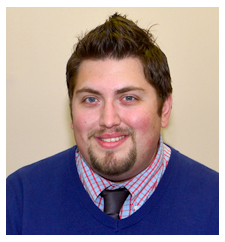Over the next three weeks we are featuring a series of posts written by MSP students who attended or presented at the Annual Conference of the Society for Humanistic Psychology: American Psychological Association: Division 32 that was held in Chicago on March 26-29, 2015.
I recently attended The Society for Humanistic Psychology’s (Division 32) Annual Conference. The event was held in Chicago, and it provided a unique opportunity for students from many schools to interact, as well as present their research. The theme of the conference was humanistic revolution. My perception of the conference as a whole was not just on practice or research, but also raising the awareness of human issues, rather than just psychological ones.
While at the conference, I was able to see Dr. Bruce Wampold’s keynote, which was incredibly rewarding given the breadth of his work covered in the Evidence-Based Practices class in the PsyD program. Dr. Wampold said something that I had not thought about previously. He discussed the types of healing that patients experience based on the treatment they receive. He said that patients can experience natural healing or the body healing on its own without any interference from technology, technological healing, intervention to assist natural healing, and interpersonal healing or healing through human interaction.
Now, given the topic of the conference, it would make sense that most of his presentation was on interpersonal healing. However, the thing that struck me from it was the notion that the therapist is an agent of technological healing. He postulated that psychology is a specific process aimed toward a targeted diagnosis. If this is true, the therapist is the tool through which the treatment is delivered. The therapist is the needle delivering the injection, so to speak. Dr. Wampold continued by saying that focusing on the problem the patient brings into therapy, rather than freely associating, has higher rates of client retention. In short, having structure and a focal point allows for better treatment for the client. This, in turn, offers better outcomes.
In bringing this up, I think it is important to be aware of our use as a tool of treatment. Not only can we get lost in our own procedure, or the outcome, but we can also lose sight of the patient as a human. When the patient becomes a walking diagnosis, it is time for us to put ourselves in check and raise our own awareness that something is off in the therapy room. Dr. Wampold also focused heavily on the need for social interaction, warmth, and acceptance in therapy. I think by bringing all of this up he was trying to point out a simple issue. If we forget to be human, we are no good to anyone, especially our patients.
 Matthew Kadrich (PsyD 3)
Matthew Kadrich (PsyD 3)
I received my bachelor’s degree in Psychology from Coastal Carolina University in Myrtle Beach. I then attended University of Detroit Mercy, where I received my master’s degree in Clinical Psychology with a specialization in Child and Family Therapy, and am currently a third year student in the doctoral program here at MSP. In my spare time, I enjoy traveling with my wife, seeing live music, cooking, and spending time with my family. I have an affinity for 80’s music, and enjoy reading comedic memoirs. I am attempting to learn how to speak Farsi, as well as searching for the perfect gluten-free muffin.